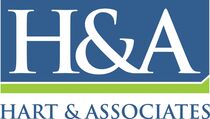© Cammeraydave | Dreamstime.com - Taxes 1040 Tax Return Form Photo
Tax Breaks That Are Now Permanent
Three tax breaks you’ll be able to take on your 2016 return, and on future returns:
Itemized Deductions and Personal Exemption Phase-Outs For 2016, itemized deductions and personal exemptions are limited when you file as single and your adjusted gross income (AGI) is above $259,400. The limitation begins with AGI above $311,300 for married couples filing jointly. Alternative Minimum Tax The exemption amount for 2016 is $53,900 for singles and $83,800 for married filing jointly. Capital Gains and Dividends Long-term gains are generally taxed at 15%. The rate is zero percent if you’re in the 10% and 15% ordinary income brackets, and 20% when you’re in the 39.6% ordinary income bracket. Affordable Care Act Surtaxes You’ll pay a Medicare surtax of 0.9% on wages and self-employment income exceeding $200,000 when you’re single and $250,000 when you’re married filing jointly. For unearned income, you’ll pay the 3.8% net investment income tax when you’re single and your modified AGI exceeds $200,000. If you’re married filing jointly, the net investment income tax is imposed when your modified AGI exceeds $250,000. If you have questions about your 2016 tax return, please call your CPA or tax advisor for assistance with understanding how these rules may affect your situation.
This is general information and should not be acted upon without first determining its application to your specific situation. Please contact your CPA or tax advisor for additional details.
Are you ready for 2017 to be even better than 2016? If so, take a few minutes to reflect on the three questions below and take action to set your 2017 profit plan.  Question 1: What were the three best business things about 2016? No need to re-invent the wheel. If you knocked it out of the park in 2016, can you wash, rinse and repeat these tasks in 2017? If you are having trouble thinking of three things, here are some hints:
Summarize the three best things that happened in your business for 2016 and think about how you can repeat them to enhance your 2017. Question 2: What were the three worst business things about 2016? While we do not want to dwell too much on our failures, we do want to learn from them. Think about the three things that are causing you to lose time, money or gain stress, and decide if you can make changes for 2017.  Question 3: What vision do you have for your business in 2017? At the end of 2017, what has to have happened in order for you to have a successful year? Think in terms of metrics as well as intangibles, such as peace of mind and happiness. Once you know your destination, the fun is in creating a roadmap to get you there. Your 2017 Profit Plan If your vision includes financial goals, then creating a profit plan is one way to measure your progress throughout 2017. Start by deciding how much profit you want to make in 2017. From there, you can compute your revenue goal and make a plan. Then you can add expenses to complete the budget. Here is an example: Let us say you want to make $50,000 in profit for 2017. You can do that in a number of ways:
From your profit number, you can create a revenue plan. This plan should include how many items you need to sell, like this:
Once you have your revenue plan, you can fill in your estimated expenses. You might be thinking that this sure sounds a lot like making a budget. And it is. But it is far more fun to work on something called a profit plan than it is a budget. And if you need us to do the number-crunching part, please feel free to reach out any time. This is general information and should not be acted upon without first determining its application to your specific situation. Please contact your CPA or tax advisor for additional details.
How Basis Works Typically, stock basis in an S Corporation begins with the capital contribution you make to get the company started. Note that when you receive stock as a gift, an inheritance, or in place of compensation, your initial basis is calculated differently. At the end of each taxable year, your stock basis is adjusted to reflect your business’s operating results. Taxable income increases your basis, while losses reduce it. Basis is also increased by capital you put into your company and reduced by amounts you withdraw, such as distributions. After your stock basis reaches zero, you may be able to deduct additional losses, up to the extent of your debt basis. That is the basis you have in loans you make to your company. However, once your stock and debt basis are both reduced to zero, losses incurred are suspended, which means you get no current tax benefit. You can generally take suspended losses in future years, when you again have basis. The Solution You can increase your basis – and your ability to take losses – by adding capital or making loans to your business. Make the time to discuss how basis affects your individual income tax return with your CPA or tax advisor. They can guide you through the rules. This is general information and should not be acted upon without first determining its application to your specific situation. Please contact your CPA or tax advisor for additional details.
|
AuthorSuccessfully meeting the challenges inherent to new and smaller businesses provides me with a special type of satisfaction. Archives
February 2022
Categories
All
|




 RSS Feed
RSS Feed







